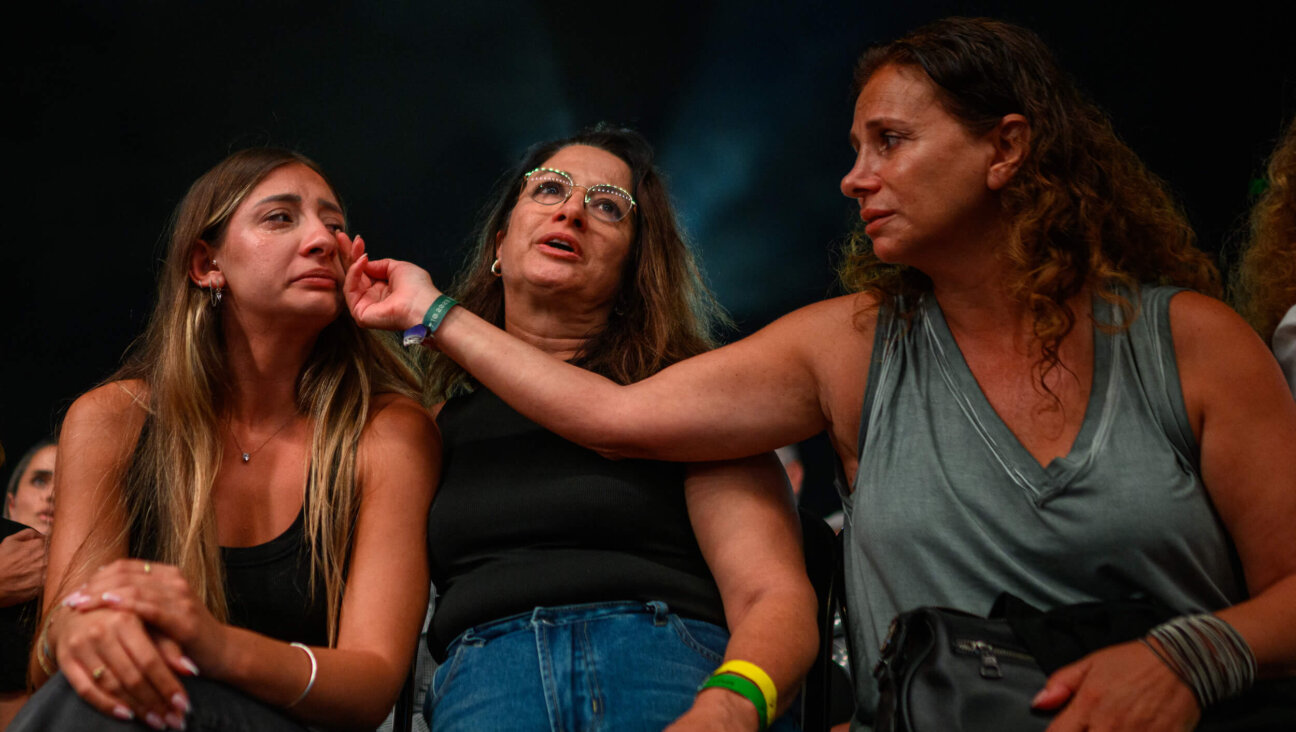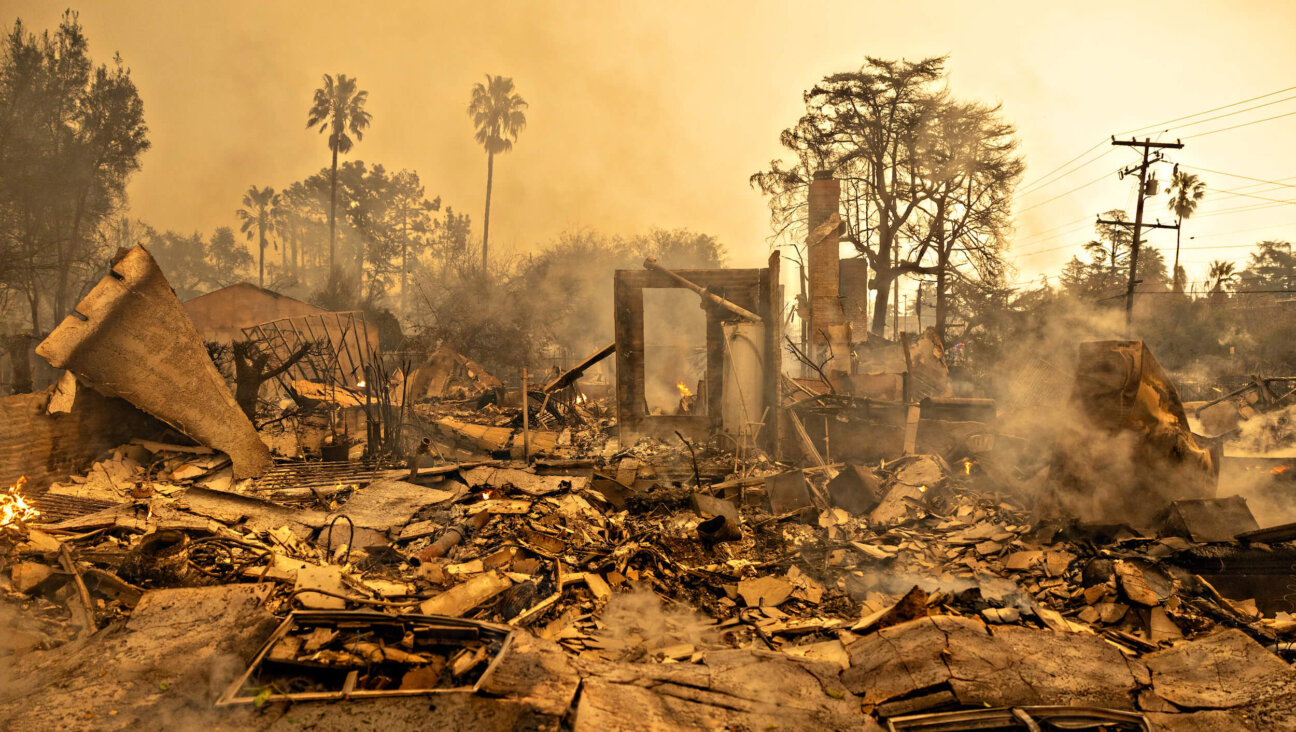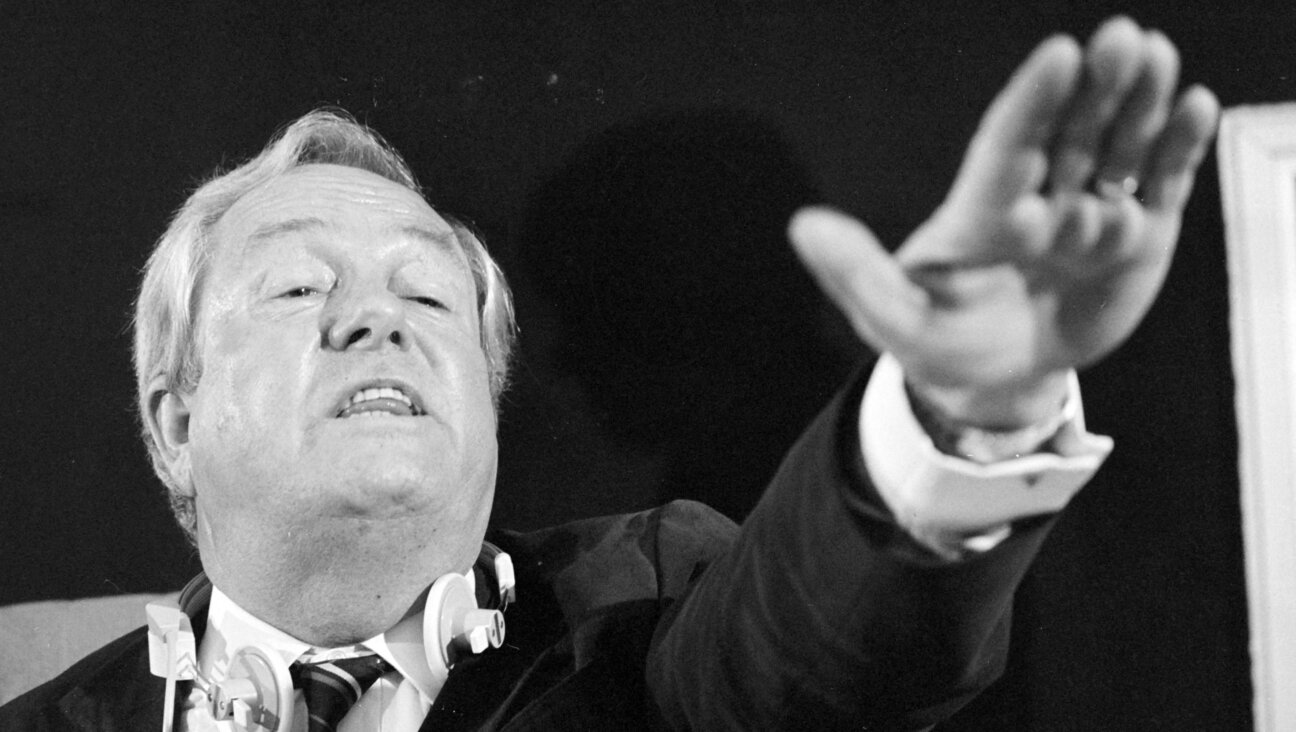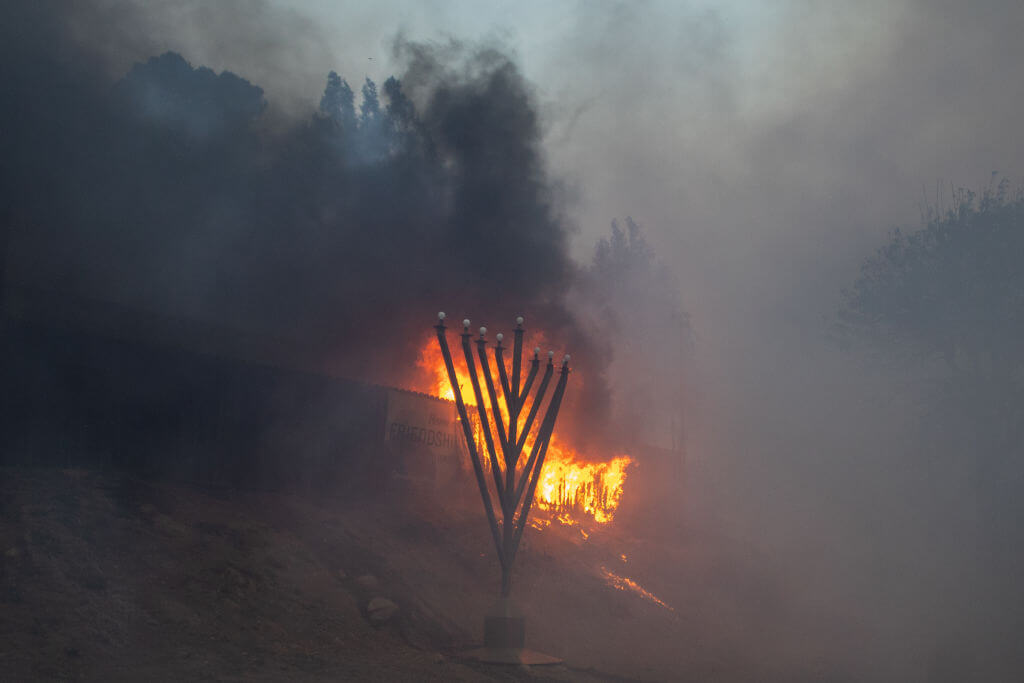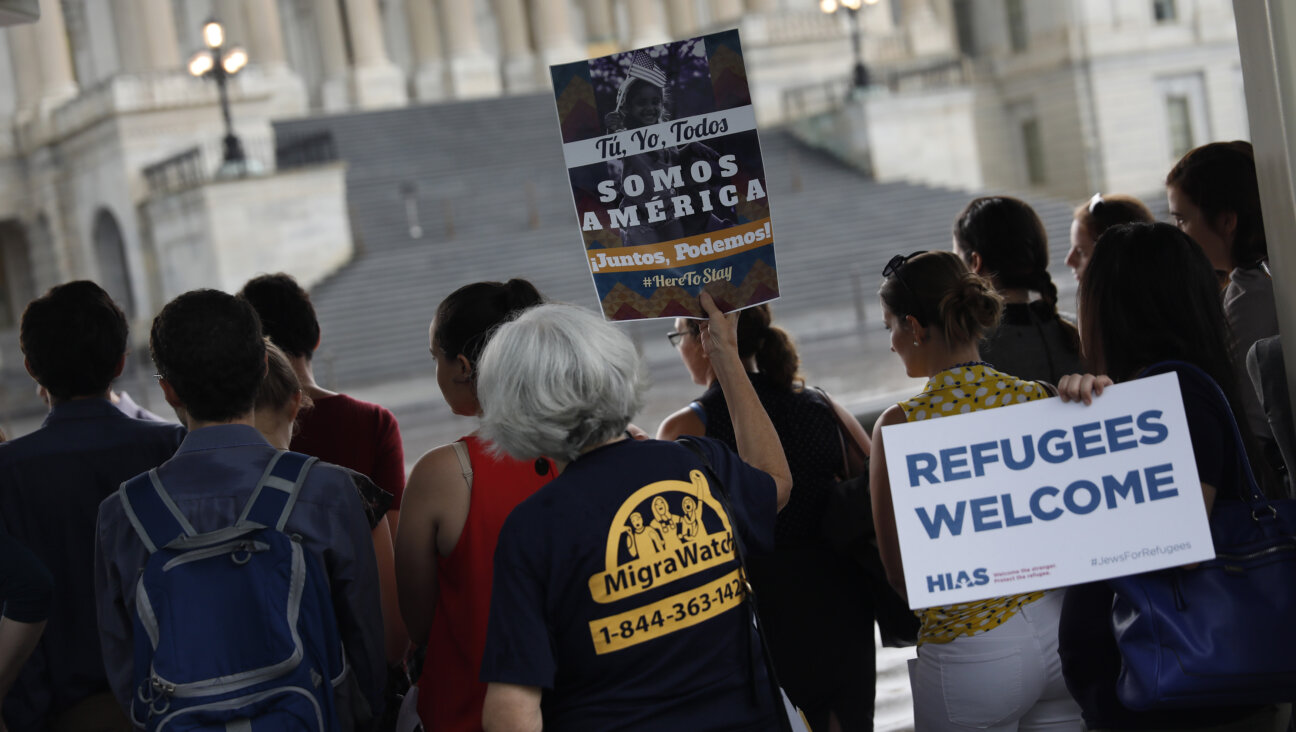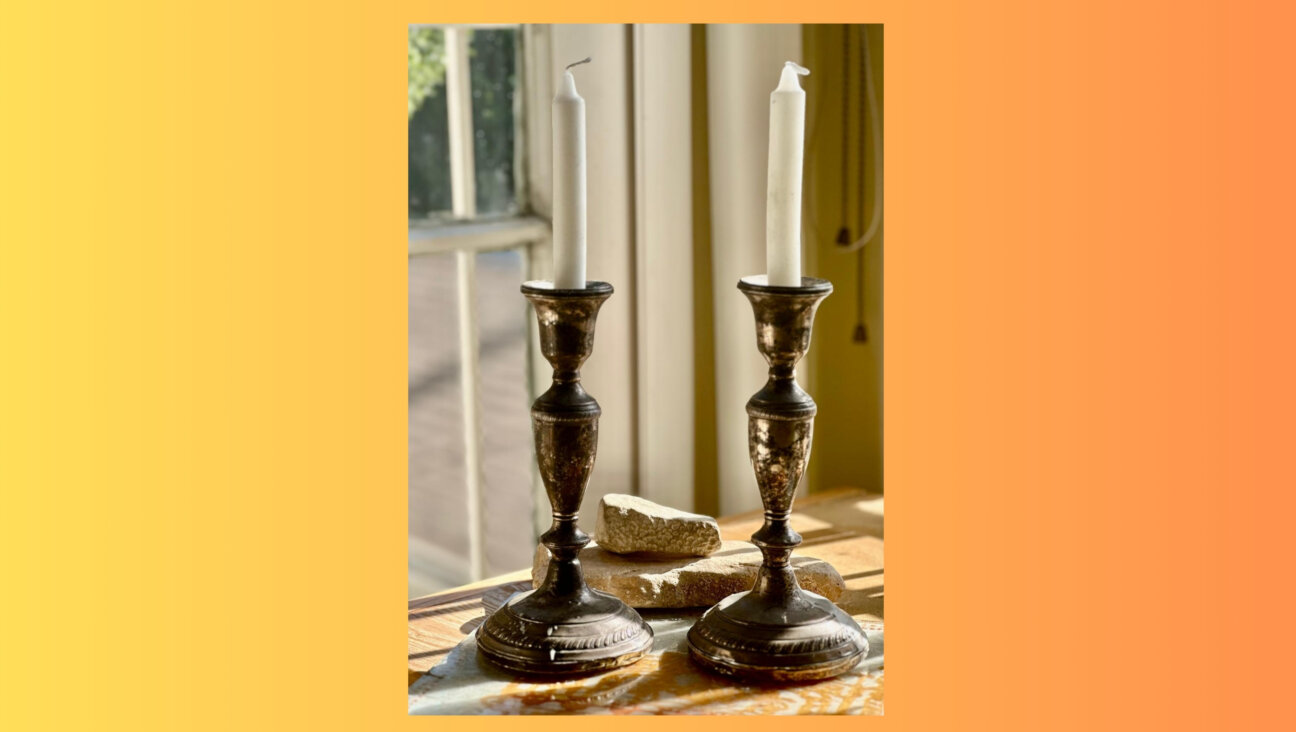Battle for Jerusalem Set Stage for Half-Century of Conflict

Fresh Off Boat: Five days after arriving in Israel, Abraham Rabinovich, center, found himself on the newly conquered Temple Mount in Jerusalem in 1967. Image by courtesy of abraham rabinowitz
Late in the afternoon on June 7, 1967, sober dark suits and homburgs mixed with the paratroopers’ battle dress as the leaders of the nation began to arrive at the Western Wall, most of them looking dazed. The paratroopers were, for the most part, too young to have seen the Wall before, yet young enough to have expected that one day they would — through peace or war. On the other hand, few of the veteran political and religious leaders had believed they would live to see it again.
With shots still ringing out periodically, the plan to bring Prime Minister Levi Eshkol and his party through the Damascus Gate and the Muslim quarter was dropped. Instead, the dignitaries were led in through Lions’Gate and across the Temple Mount, a route that did not require passage through residential quarters. Accompanying Eshkol were two chief rabbis, the Askenazi with a top hat and the Sephardi with a turban.
The two men who had led Jerusalem through the siege of 1948, not always amicably, were standing together at the Wall — Dov Joseph, the former governor of the city, and David Shaltiel, the former military commander. The Haga, or civil defense, district chiefs who had shepherded the city’s population through the current crisis arrived together. The one religious officer among them led them in prayer. All were weeping.
Two venerable rabbis arrived on the Temple Mount in a recoilless rifle jeep that had been specially dispatched by a chaplain to bring them, their white beards bending in the wind as they clung to the vehicle. The pair consisted of Rabbi Zvi Yehuda Kook, leading spiritual authority for many in Israel, and the saintly Talmud scholar known as the Nazir, Rabbi David Cohen. The Nazir had made, years earlier, a vow not to leave his house and his studies for the outside world. The vow could be waived on infrequent occasions, such as funerals or weddings, but three people — adult Jewish males — were needed to grant permission. When he asked the three men with him in his apartment if he had their permission to leave for the Western Wall, they repeated three times, in unison, “You may.”
At the Wall, the Nazir went immediately to the stones and began a solitary prayer, but Kook acted with strange indifference. He stood in the midst of the crowd, chatting absently with an old friend, asking the address of a mutual acquaintance and commenting on a religious tome he had just written. Suddenly, as if a door in his mind had just opened, the rabbi burst into tears and threw himself at the Wall, spreading his arms to embrace the stones.
While piety marked the scene in the cramped alley before the Wall, power dominated the monumental stage of the Temple Mount above. Long lines of Arabs were silhouetted against the sky as they moved across the platform of the Dome of the Rock guarded by helmeted paratroopers cradling Uzis. The Arabs, all in civilian dress, were ordered to kneel in lines facing a stone wall, their hands on their heads, until they were called individually for interrogation. Some of the prisoners were older men, but many young men with military bearing could be seen among the rest. Their interrogators identified some as soldiers by dog tags or compass straps that they had retained after discarding their uniforms.
When one Arab put down his hands, a paratrooper barked at him and motioned with his Uzi to get them back up. A swarthy sergeant major commanding the guard detail cautioned his men, “They’re prisoners, but they’re also human beings.” The Arabs were overwhelmed by the display of might casually bristling about them. Intelligent Jordanians had believed that the Jordanian army by itself could defeat Israel and that the present debacle was as incomprehensible as it was humiliating.
One prisoner slumped against a tree with his eyes closed as if he were hoping the nightmare would disappear when he opened them. When a plane roared low overhead, tears flowed through his closed lids, and his hands trembled. “They’re afraid,” a young soldier said to a reporter watching the scene, “but we won’t harm them.” Colonel Daoud Daoud, the Jordanian liaison officer to the Mixed Armistice Commission, had been captured the day before, outside the walled city. It was he who had filed the protest against the Independence Day parade in Jerusalem three weeks earlier. Shaul Ramati, the Foreign Ministry official who sat opposite him at that meeting, was told of his capture. Ramati contemplated visiting him, but decided that it would embarrass his old acquaintance. The colonel was released after a short time. (He would, three years later, become the prime minister of Jordan.)
A score of Arab dignitaries, including Governor Anwar al-Khatib, the chief judge of the religious court and the police chief, were kept together. A number of other senior officials were rounded up from their homes during the day. Many expected to be shot. On the Temple Mount, soldiers instead offered them water from their canteens and sometimes cigarettes, which they lit for them. “It’s your king who started this,” a soldier said to one of them.
The paratroopers were bronzed and unshaven, and some had draped Arab kaffiyehs around their necks. On the Dome of the Rock platform. a group of officers surrounded by the antennas of their radiomen watched warplanes circling beyond the Mount of Olives and darting down somewhere above the Jericho Road, which had not yet been taken. Civilian vehicles mobilized as supply trucks, including milk and produce trucks now laden with military equipment, were parked on the esplanade. Exhausted soldiers climbed into the cabs of the trucks to nap. At the far end of the plaza, cheers went up from soldiers gathered around an officer who had just finished addressing them.
The Old City had been taken at the cost of two paratroopers killed inside the walls and one outside. Just before dawn, the Jordanian commander had led his 500 soldiers out through Dung Gate, the only gate shielded from the Israelis. They walked down the Jericho Road and crossed Allenby Bridge into Jordan. Had they chosen to fight in the warren of alleys, there was a good chance that they could have delayed the Old City’s capture until the United Nations called for a cease-fire. About a dozen Jordanian soldiers who remained behind were killed in final skirmishes, and many more were captured.
Damage to holy places was minimal. Although the Temple Mount had been used as a firing position and an armory, the only damage to it, besides some bullet nicks, was that done to the door at Al-Aqsa Mosque, whose lock had been blasted open by a paratroop lieutenant when army knapsacks were found outside. The lieutenant was reprimanded, and a guard was posted at the mosque’s entrance.
Soldiers roamed the compound like tourists but were barred by sentries from entering Al-Aqsa or the Dome of the Rock. Two privates found the door to the Dome of the Rock temporarily unguarded late in the afternoon. They made their way to a balcony beneath the dome and tested the acoustics by speaking to each other from opposite ends. At one point, a third voice drifted up from the mosque floor. It was the paratroop commander, Motta Gur, summoning them down. An Israeli flag that had been hung from the top of the golden dome was ordered removed by Defense Minister Moshe Dayan, who had arrived later. He would, in a few days, order de facto jurisdiction of the Mount restored to the Muslim authorities.
In storerooms at the northern end of the Mount, a dozen soldiers poked through crates of weapons until they uncovered boxes of soft drinks. As they sat on a terrace drinking, they spoke with a foreign reporter about the Jordanians they had met in battle. “They were good,” one said, “but we were better.”
Despite the bewildering speed of events, the soldiers had plainly given thought to the political implications of the battle. “They can have all the rest back,” one said, “but not our holy city.” Anther spoke of keeping all or part of the territory captured in Sinai and the West Bank. (The battle for the Golan had not yet begun.) “They started the war.” One soldier advocated returning all the territory captured, including Arab Jerusalem, in exchange for peace. In this random discussion on the Mount before the last shots were fired, the template for the major positions that would occupy the political arena in the coming half-century (and counting) was laid out.
Abraham Rabinovich is the author of “The Battle for Jerusalem: An Unintended Conquest”, and of “The Yom Kippur War: The Epic Encounter That Transformed the Middle East (Shocken, 2004)
A message from our Publisher & CEO Rachel Fishman Feddersen

I hope you appreciated this article. Before you go, I’d like to ask you to please support the Forward’s award-winning, nonprofit journalism so that we can be prepared for whatever news 2025 brings.
At a time when other newsrooms are closing or cutting back, the Forward has removed its paywall and invested additional resources to report on the ground from Israel and around the U.S. on the impact of the war, rising antisemitism and polarized discourse.
Readers like you make it all possible. Support our work by becoming a Forward Member and connect with our journalism and your community.
— Rachel Fishman Feddersen, Publisher and CEO








